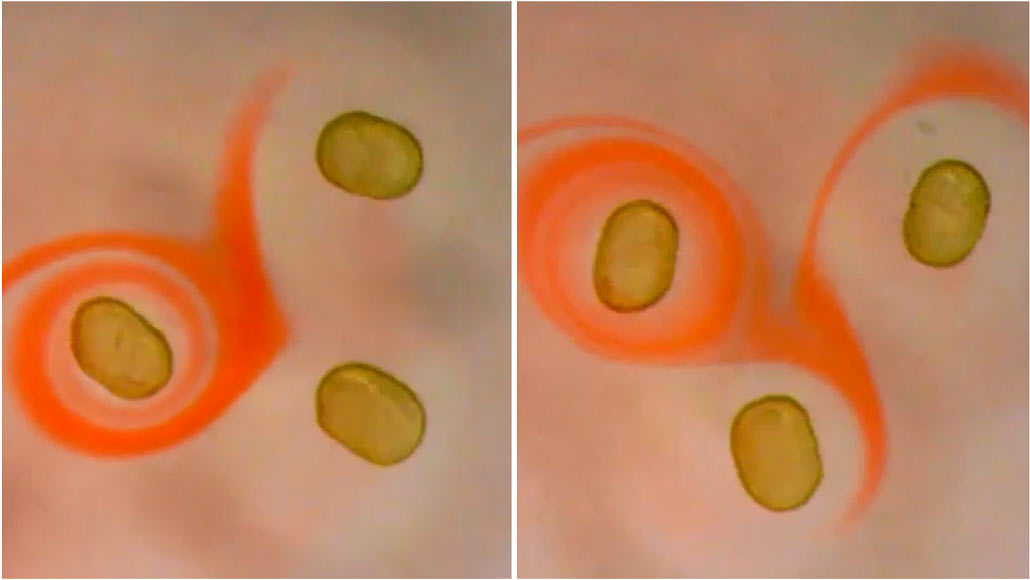Permanent liquid magnets have now been created in the lab
These droplets have the mechanical properties of liquids and the magnetic properties of solids

MAGNETIC DROPLETS Scientists have now created permanent liquid magnets. Here, magnetized liquid droplets (yellow) twirl in oil, under the influence of a rotating magnetic field, wrapping themselves in orange dye.
X. Liu et al/Science 2019